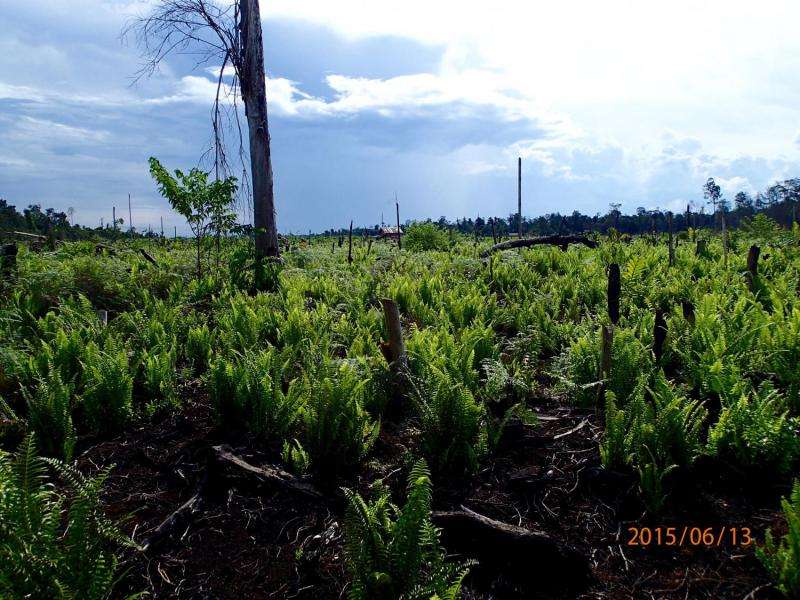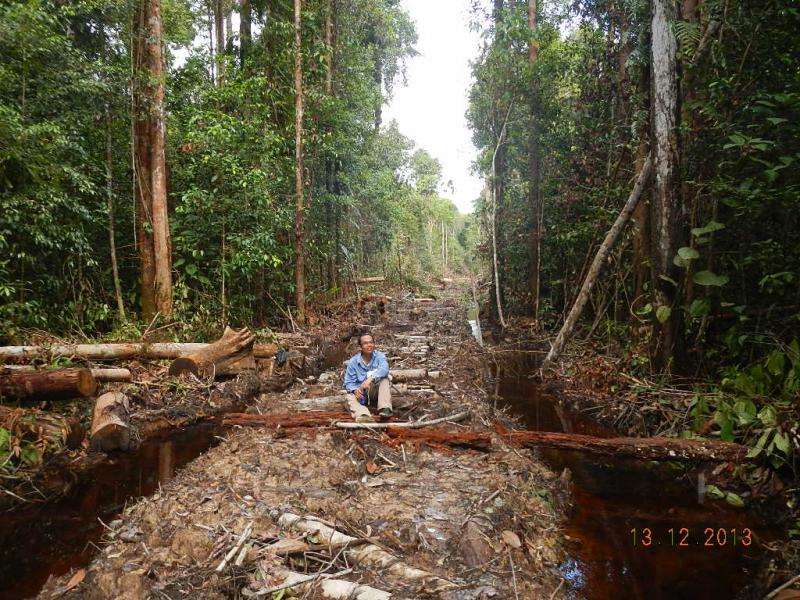Hydrological drought amplifies wildfires in Borneo's humid tropics

The area of wildfires in Borneo during drought years turns out to be ten times larger than during non-drought years, an international research team reports in Nature Climate Change of this week. The fires recurrently affecting Borneo's humid tropical ecosystems have negative influence on the biodiversity and lead to large CO2 emissions, affecting atmospheric composition and regional climate processes. Future droughts in wet tropical regions will likely increase in frequency and severity, and consequently the fire risk, the team says.
The researchers from Wageningen University & Research, Bogor Agricultural University in Indonesia, University of East Anglia and the Center for International Forestry Research analysed the spatially distributed pattern of hydrological drought, that is the drought in groundwater recharge, in Borneo using a simple transient water balance model driven by monthly climate data from the period 1901-2015. Their findings provide evidence that there has been a drying trend in terms of affected area, since the start of the last century.
Droughts and wildfires
The team also explored the link between hydrological drought and wildfire using the monthly fire area burnt from the spatially distributed Global Fire Emission Dataset from the period 1996-2015. They classified years in this period into drought and non-drought years. The analysis illustrates that wildfires occur annually, that is, also in non-drought years, but that amplification of wildfires occurs during drought years. In drought years, the maximum area burnt is almost a factor of ten larger than in non-drought years. Frequency of very large fire extents (>10,000 ha) is significantly higher in drought years.
So far, prediction of wildfires is mainly based on solely climate information (e.g. precipitation, El Niño/Southern Oscillation, ENSO strength). There were indications that by integrating hydrological variables, fire occurrence would be better identified. The researchers used over 300 statistical relationships to test if models integrating hydrology (hydroclimate-oriented models, including, e.g. recharge, H-CLIM) would perform better than models using climate only (climate-oriented models, CLIM). Different goodness-of-fit criteria show that H‑CLIM models perform better and that the variance of the residuals of the H-CLIM models is significantly lower than from CLIM models.

Biodiversity hotspots
Impacts in Borneo are exemplary for other biodiversity hotspots in the humid tropics, for example, the Amazon. The large-scale wildfires frequently coincide with prolonged ENSO-driven droughts (El Niño/Southern Oscillation). Future droughts in wet tropical regions will likely increase in frequency and severity, and consequently the fire risk. Therefore, a better understanding of processes underlying the fire area burnt of tropical humid ecosystems during droughts is urgently required, the researchers argue.
An ensemble of the 13 best performing models was used, both for CLIM and H-CLIM to predict the spatially-distributed mean and maximum area burnt for the period 1950-2015 to explore to what extent hydrology adds. El Niño strength (4 classes) was determined to find out if the influence of hydrology depends on the strength. The analysis shows that if CLIM models are used the area burnt is underestimated by at least 15%. More importantly, the underestimation is larger for strong and very strong El Niño years. For these years the predicted maximum annual area burnt is more than 150% larger when hydrology is integrated (H-CLIM models).
This study highlights the importance of considering hydrological drought for wildfire prediction, and the researchers recommend that hydrology should be considered in future studies of the impact of projected ENSO strength, including effects on tropical ecosystems, and biodiversity conservation.
More information: Muh Taufik et al. Amplification of wildfire area burnt by hydrological drought in the humid tropics, Nature Climate Change (2017). DOI: 10.1038/nclimate3280
Journal information: Nature Climate Change
Provided by Wageningen University & Research




















